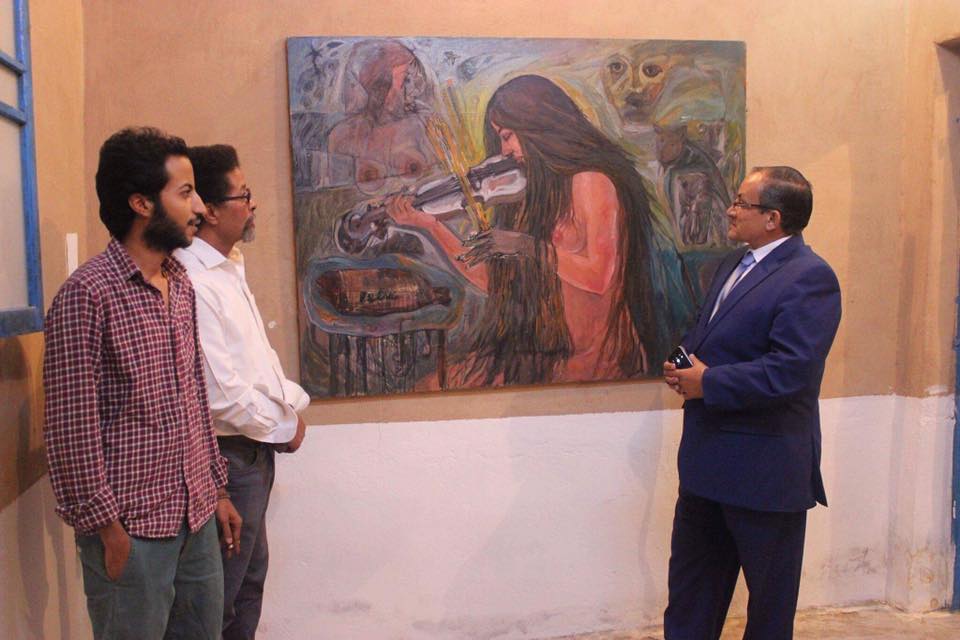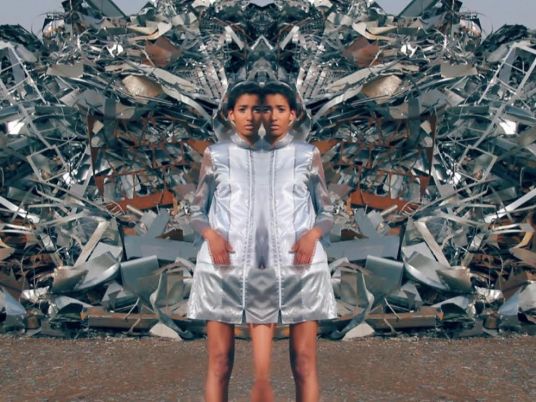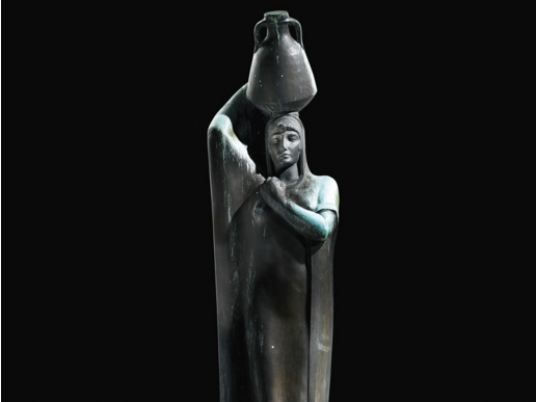Some 50 people mill about the small gallery space, strolling through the different rooms to the sounds of a violin/cello duo playing in the corner. Some leave, while others linger at each painting. patrons continue to file in, each one made more ecstatic than the last by the vibrant colors ruggedly painted onto the framed canvases.
The place is abuzz, and in the center of it all stands Gazbia Sirry herself: small in size yet enormously magnetic, unable to say more than a few words to anyone before having to meet and greet a new friend, fan or media person. "Your colors are so exciting!" exclaims Italian Cultural Attache and art aficionado Redenta Maffettone. Smiling demurely, Sirry responds: "My colors are always exciting."
Sirry has often been described as one of Egypt’s most influential painters. Educated at Cairo University’s faculty of fine arts, she currently boasts more than 50 solo art exhibitions. She is the only Egyptian artist with a painting–"The Kite"–featured in the New York Metropolitan Museum of Art’s permanent collection.
Her style is said to have changed throughout the years, as different political and societal issues have come to the fore. While it remains difficult to classify Sirry’s work as belonging to any one particular school of art, critics have noted the strong neo-expressionistic strand that has typified much of her painting.
Her latest collection, "Incarnation," is no different. Bold color contrasts, unhesitating brush strokes and semi-abstract human forms all serve to express the raw emotion and spirit visible in each painting. Much like the city she depicts, there is a vivid and childlike violence–a colorful madness and distorted beauty–to every painting in the "Incarnation" series.
It’s no easy feat to pin Sirry down for a lengthy chat–but once you do, you had better brace yourself for some strong opinions and some serious pearls of wisdom.
"Gazbia is the ’68 revolution in France," says Swiss banker Bernhard Kauer-Schaad. "She has the revolutionary spirit; she’s restless." After perusing Sirry’s most recent work, Kauer-Schaad turns to the artist, exclaiming, "A beautiful exhibition, again and again and again–but you have changed, Gazbia."
"I am not a stone!" Sirry replies. "I’m alive! I change!"
Sirry explains her reasons for naming her latest exhibition "Incarnation," pointing out that she herself is "incarnated" in every painting. "My mind, my emotions–all is incarnated in each bit of canvas." On her intrepid color choices, Sirry explains that, even when attempting to express tragedy, she employs "beautiful colors for some optimism, to balance."
The exhibition’s flagship piece–the one shown on the exhibition’s poster–is officially unnamed, although it has been dubbed "The Madonna." Sirry points to the female figure in the painting. "This is Notre Dame," she says. Pointing to the figure on the left, she says, "and this is Jesus." Sirry goes on to explain that she has visited Paris frequently in recent years for medical visits. "Each time I’m in Paris, I go to Notre Dame and light a candle," she says.
Her latest collection was all done in oil. Sirry notes that, despite the difficulties of working with the medium, she prefers it to acrylic. In terms of her style, she says that behind the "music and poetry" of her paintings lies a solid structure. "If you look closely," she almost whispers, "you’ll see that it’s built mathematically."
It took her two years to finish her "Incarnation" collection. When asked if she had plans for another, Sirry says, "No, this is a time to contemplate. I need to digest what is happening in the world–what is happening here–and then turn it into music and poetry. Can you imagine? It is impossible!"
Gazbia Sirry’s "Incarnation" exhibition can be seen at the Zamalek Art Gallery–located on 11 Brazil St, Zamalek–until March 4.




